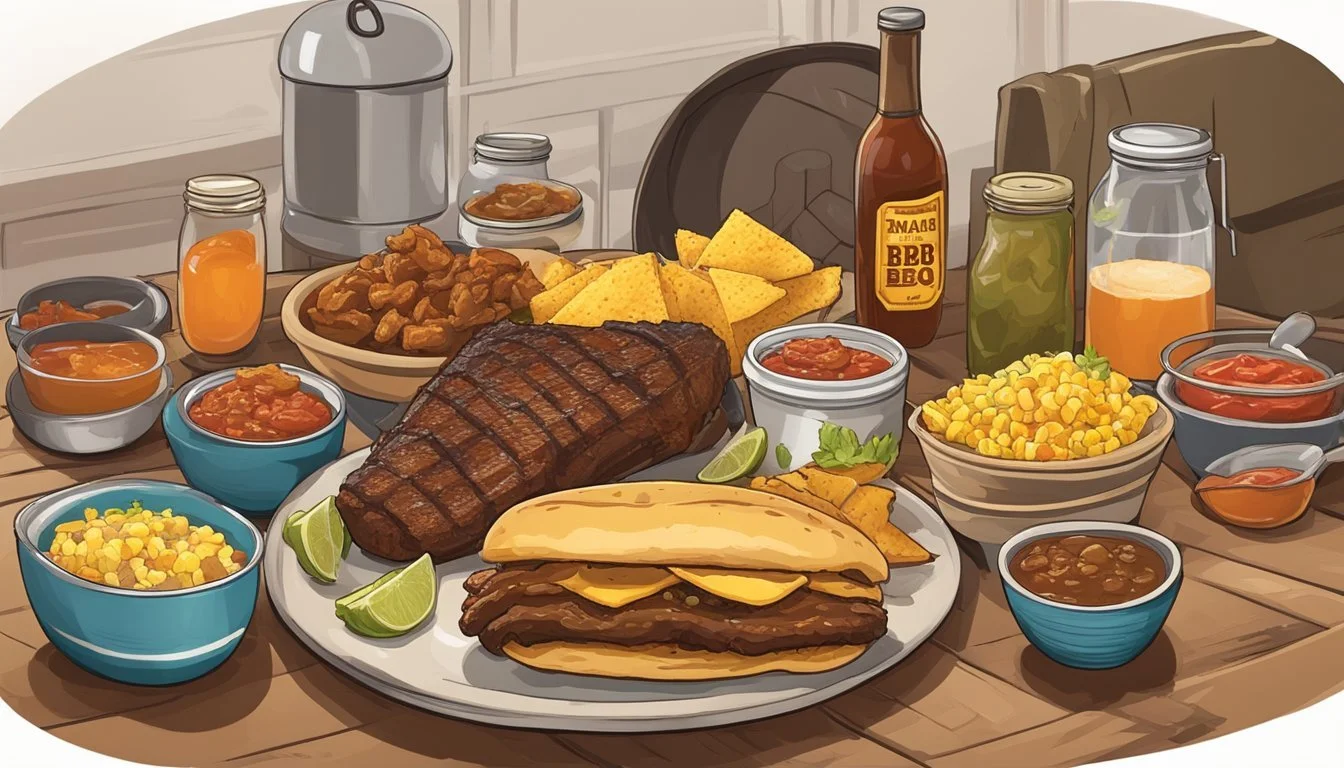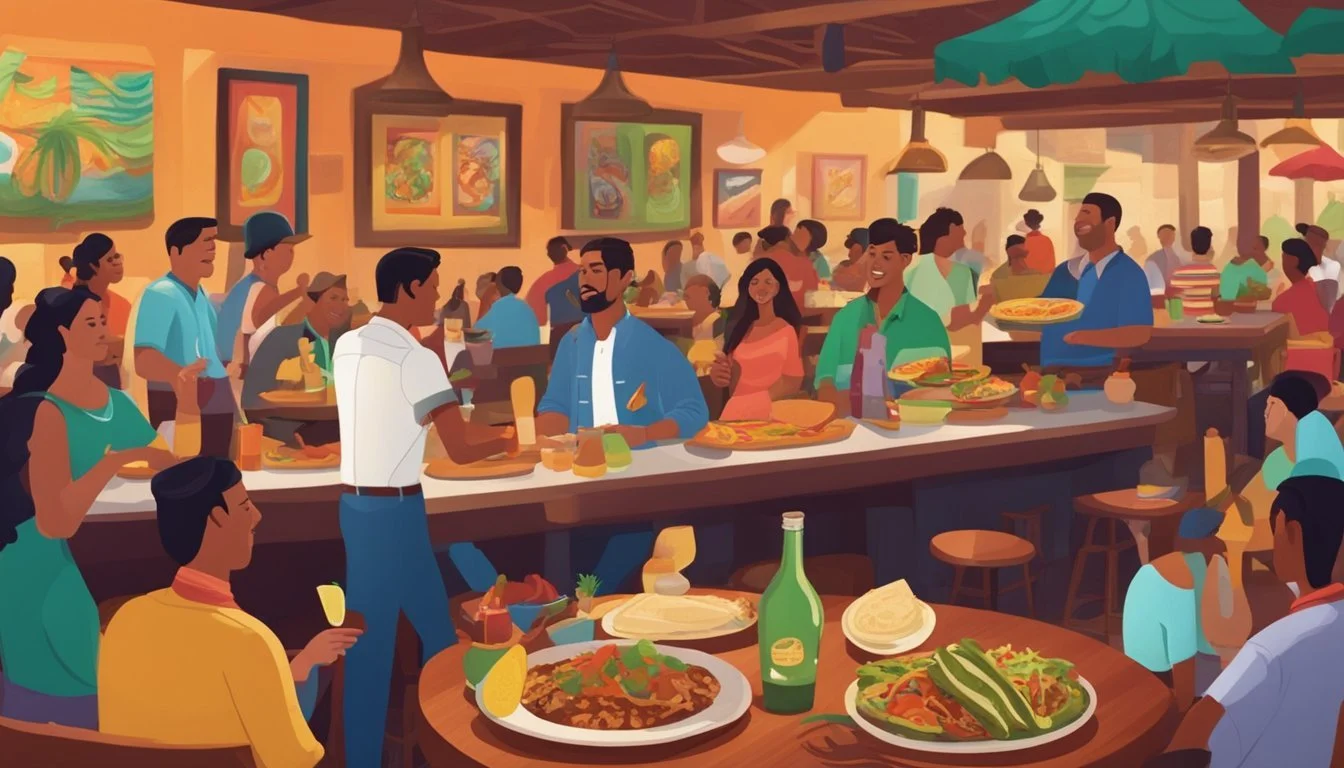5 Unique Texas Food Traditions
A Culinary Journey Through the Lone Star State
Texas boasts a rich tapestry of culinary traditions that reflect a diverse cultural heritage. Known for its robust flavors and hearty dishes, Texas cuisine draws influences from Mexican, Southern, African American, Native American, and European culinary practices. This article explores some of the most unique food traditions in Texas, providing a glimpse into the Lone Star State's vibrant and flavorful gastronomic landscape.
Throughout the state, food is more than just sustenance; it is a fundamental part of the Texan identity and communal experience. From bustling cities to rural towns, each region has its own signature dishes that have become symbols of local pride. These traditions offer not just meals, but a taste of Texas history and culture.
1) Kolaches
Kolaches are a beloved pastry in Texas with a history rooted in Czech immigrant traditions. Czech settlers brought these sweet treats to Texas in the 1800s, making them an essential part of the local food culture.
Authentic kolaches are made from a sweet yeasty dough, similar to sweet dinner rolls. The dough is shaped into rounds with a well in the center to hold fillings. Traditional fillings include fruit purees like apricot and prune, as well as sweet cheeses and poppy seeds.
Over time, Texas has embraced and adapted kolaches, creating savory variations. Sausage kolaches, often featuring sausages wrapped in the sweet dough, are popular for breakfast and snacks. Other innovative fillings include ham, chicken enchiladas, and jalapeño cheese.
Baking kolaches to perfection involves preheating the oven to around 375ºF (190ºC). Brushing them with melted butter or beaten egg wash provides a beautiful, golden brown color and shiny finish.
Kolaches can be found in family-owned bakeries across Texas, especially in towns with significant Czech heritage. These bakeries continue to uphold the traditional methods while also experimenting with new flavors and combinations.
Texas kolaches stand out as unique culinary icons, representing the blend of cultural heritage and local innovation that defines the state's food traditions.
2) Chicken-Fried Steak
Chicken-fried steak stands out as a beloved staple in Texas cuisine. This dish typically consists of a piece of tenderized beef steak, which is breaded and fried to a crisp golden brown. It is usually served with creamy gravy, emphasizing its Southern comfort roots.
The dish gained official recognition in 2011 when Texas established October 26 as Chicken Fried Steak Day, celebrating its status as a symbol of Texas culinary culture. This tradition commemorates the dish's rich history and its special place among Texas foods.
Restaurants and diners across Texas feature chicken-fried steak as a prominent menu item. It is often accompanied by mashed potatoes, green beans, or other Southern side dishes, accentuating its hearty nature.
Texas's diverse cultural influences contribute to variations of this dish. It reflects the blend of Southern, European, and other culinary traditions that shape Texas's unique food landscape. Often, local recipes and secret ingredients add a personal touch to each version of chicken-fried steak.
Chicken-fried steak remains a favorite not just for its taste, but for its deep-rooted connection to Texas history and culture. It encapsulates the spirit of Texan cooking — hearty, flavorful, and comforting, providing a homely feel to anyone lucky enough to enjoy it.
For anyone exploring the culinary traditions of Texas, trying a well-made chicken-fried steak is essential. Its rich flavors and satisfying texture make it a dish that truly represents the Lone Star State’s love for good food and hearty meals.
3) Texas Barbecue Brisket
Texas Barbecue Brisket stands as a cornerstone of Texas culinary tradition. Slow-cooked to perfection, this dish emphasizes the "low and slow" method that bestows tenderness and deep, smoky flavors on the meat.
A whole brisket, often referred to as a "packer" brisket, usually weighs between 8 to 20 pounds. The cooking process requires patience, with temperatures set between 225°F and 250°F for several hours.
The brisket's preparation involves an initial rub of spices such as salt, pepper, and paprika. Once seasoned, it is placed in a smoker for an extended period, where it undergoes a transformation, breaking down tough connective tissues.
The history of Texas Barbecue Brisket is rich, dating back to the traditions brought by German and Czech settlers. These communities contributed to the barbecue methods and flavors that define Texas today.
A key aspect is the post-cooking rest period, where the meat is allowed to retain its juices. This step is crucial for achieving the moist, tender texture that true Texas brisket is known for.
The result is a piece of meat that not only offers a burst of flavor but also a texture that practically melts in your mouth. Texas BBQ enthusiasts consider this dish not just a meal, but a rite of passage for any serious pitmaster.
4) Breakfast Tacos
Breakfast tacos are a beloved tradition in Texas, merging the classic breakfast ingredients with the vibrant, bold flavors of Tex-Mex cuisine. These savory handheld delights often include eggs, cheese, bacon, and sausage, served in warm tortillas.
The rise of breakfast tacos in Texas is not just about delicious food; it’s a cultural phenomenon. People across the state seek out the best tacos, sparking friendly rivalries over which establishment serves the ultimate breakfast taco.
Making breakfast tacos at home is simple and rewarding. Begin by scrambling eggs with ingredients like cheese, bacon, or chorizo. Place the mixture in a flour or corn tortilla, adding toppings such as salsa, avocado, or refried beans for extra flavor.
In cities like Austin, San Antonio, and El Paso, local taquerias have become famous for their breakfast tacos. For instance, El Taquito in El Paso is renowned for its tasty tacos and friendly service.
Breakfast tacos are not just for sit-down meals. They are perfect for on-the-go, making them a staple for busy Texans. This practical and flavorful option has cemented its place in Texas’ diverse culinary landscape.
5) Frito Pie
Frito Pie is a quintessential Texas comfort food that combines the crunch of corn chips with the savory flavors of chili and cheese. Often served in a cut-open Fritos bag, this dish is both portable and deliciously indulgent.
The roots of Frito Pie trace back to the mid-20th century and are linked to Charles Elmer Doolin of San Antonio. He acquired the recipe for Fritos corn chips and helped popularize this unique culinary creation.
Typically, Frito Pie consists of a generous layer of Fritos topped with spicy chili, grated cheese, and optional garnishes like chopped onions and jalapeños. The combination of textures and flavors has made it a staple at sporting events and casual gatherings throughout Texas.
Simple yet satisfying, Frito Pie remains a beloved tradition that celebrates the unpretentious and flavorful approach of Texan cuisine. Whether made at home or enjoyed at a local game, it continues to capture the essence of Texas food culture.
The Influence of Native American Cuisine
Native American cuisine has had a profound impact on Texan food traditions, including staple ingredients and techniques that endure to this day, as well as the adoption and adaptation of these elements in modern dishes.
Staple Ingredients and Techniques
Indigenous peoples of Texas utilized a diverse range of ingredients and cooking methods that continue to shape the state's culinary landscape. Key ingredients included corn, beans, squash, and wild game such as bison and deer.
Fish and various nuts were also essential in their diet. Cooking techniques like roasting, boiling, and grilling on open flames were commonly used. Traditional methods, such as earth ovens and smoke drying of meat, provided the groundwork for many Texan barbecue techniques.
Adoption and Adaptation in Modern Dishes
Modern Texan cuisine incorporates many Native American elements. Corn remains a foundational ingredient, seen in masa for tamales and cornbread. Native American methods of smoking and curing meats are prominent in Texas barbecue.
Beans and squash are staples in Tex-Mex cuisine. Modern dishes also reinterpret these traditional ingredients, blending them with other cultural influences. For example, venison chili and smoked bison brisket pay homage to indigenous recipes while infusing contemporary flavors and preparation styles.
Mexican Cuisine and Tex-Mex Fusion
Mexican cuisine and Tex-Mex fusion reflect a blend of cultural influences and culinary traditions. This fusion creates unique and flavorful dishes that hold historical significance and feature distinctive ingredients.
Historical Roots and Cultural Significance
Tex-Mex cuisine originated in Texas and is deeply influenced by Mexican culinary traditions. The melding of Spanish, indigenous Mexican, and Texan flavors began during the early days of European colonization.
This blend reflected the integration of European settlers' ingredients with local Mexican staples. Over time, this fusion became a culinary symbol of the Southwest, showcasing the cultural exchange between Texans and Mexicans.
Tex-Mex cuisine emerged prominently in the 20th century. It introduced newly accessible ingredients like flour tortillas, yellow cheddar cheese, and canned vegetables, differentiating it from traditional Mexican dishes.
Signature Tex-Mex Dishes
Tex-Mex features a wide array of signature dishes distinct from traditional Mexican cuisine. Fajitas showcase grilled meats, such as skirt steak, served with flour tortillas, bell peppers, and onions.
Chili con carne, a robust meat and chili pepper stew, exemplifies hearty Tex-Mex fare. Enchiladas, another favorite, typically come smothered in rich sauces and filled with ingredients like cheese, chicken, or beef.
Nachos, an iconic appetizer, combine tortilla chips with melted cheese, jalapenos, and assorted toppings. Queso dip, a creamy cheese sauce, and tacos filled with ground beef or chicken are also central to the Tex-Mex dining experience.
These dishes highlight the creativity and diverse flavors that arise from Mexican and Texan culinary influences, making Tex-Mex a celebrated cuisine worldwide.
Barbecue: A Texas Tradition
Texas barbecue is a cherished culinary art that stands out due to its unique regional variations and expert smoking techniques. Different areas of Texas have distinct styles, and the use of specific woods and slow-cooking methods imbues the meat with unparalleled flavor.
Regional Variations in Texas Barbecue
In Texas, barbecue styles differ by region. Central Texas is famed for its "meat market" style, focusing on simple rubs of salt and black pepper for large cuts like brisket, smoked low and slow. East Texas blends beef and pork traditions, offering ribs and brisket with sweet, tomato-based sauces. West Texas uses mesquite wood in direct grilling, producing a different flavor profile. South Texas often incorporates Mexican influences, including barbacoa made from cow's head, cooked underground.
Central Texas: Salt and pepper rubs, brisket, indirect heat.
East Texas: Sweet sauces, pork and beef mix.
West Texas: Mesquite wood, direct heat.
South Texas: Barbacoa, underground cooking.
Smoking Techniques and Flavor Profiles
Texas barbecue smoking techniques are crucial in ensuring the meat's tenderness and flavor. Central Texas barbecue typically involves smoking with oak or hickory wood at low temperatures for extended periods, preserving moisture and infusing deep, smoky flavors. East Texas barbecue uses a similar low-and-slow method but often includes a preliminary marination to enhance the sweetness.
West Texas barbecue favors high-heat grilling with mesquite, giving the meat a robust, intense flavor. South Texas's traditional barbacoa employs underground pits, which wrap the meat in leaves for slow roasting, resulting in a juicy, tender product with distinctive, earthy flavors.
Central Texas: Oak/hickory wood, low temperatures.
East Texas: Sweet marinades, low temperatures.
West Texas: Mesquite wood, high heat.
South Texas: Underground pits, leaves for wrapping.



